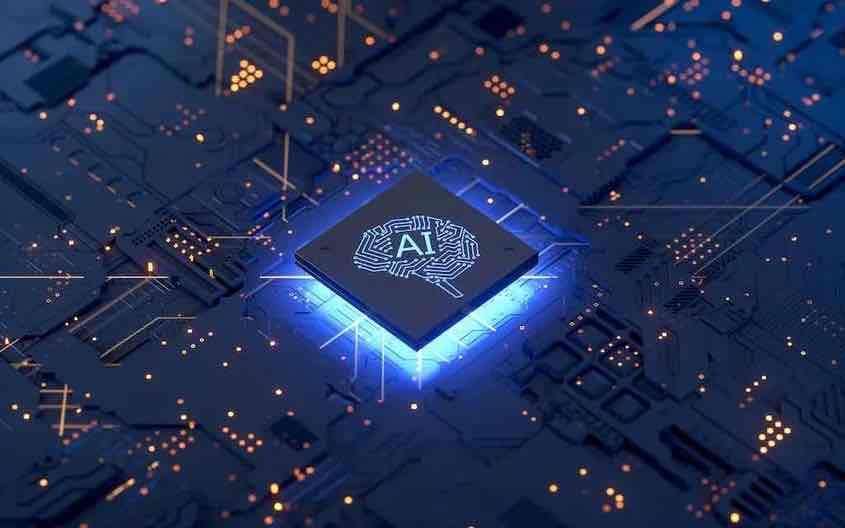How Data Will Drive the Future of AI in Asset Management

In simpler times, joint use asset management for a utility or communications company wasn’t so daunting. It was important work, to be sure, but engineers, diligent field inspectors, and skilled maintenance personnel could handle it comfortably. A steadily growing customer base supplied ample revenues to pay for expanding and upgrading the plant.
These days, as noted in an analysis by Deloitte, utilities are managing 10 times the number of assets they had 20 years ago. The addition of renewable energy sources such as solar panels and wind turbines to the old menu of hydroelectric power, nuclear power, and coal-fired plants has begun transforming the industry. And a group of factors Deloitte identified as “disruptors” has pushed capital spending higher for utilities at a time when energy consumption in developed countries such as the United States no longer keeps pace with GDP growth, as it did for much of the 20th century. These disruptors are:
- Increasingly severe storms and disasters
- The growing threat of vicious cyber-attacks
- More stringent regulatory requirements and mandates
- Aging assets
- Changes in demand exacerbated by the COVID-19 pandemic
Meanwhile, deployment of cellular equipment by communications companies is mushrooming to meet the demand for a much denser network to support 5G technology and the Internet of Things (IoT). Macro cell towers are being supplemented by thousands of small cell installations, many of them attached to utility poles.
Major advances in efficiencies are required to prevent spiraling costs from getting out of hand. A more resilient power grid is needed to fend off attacks from increasingly sophisticated attackers, as well as a more unpredictable climate.
Simply put, traditional approaches to asset management are inadequate to deal with the array of challenges confronting the industries involved.
What is AI?
As a paper from The Brookings Institution explains, there is no one set definition of AI. However, it generally can be described as the ability of intelligent machines to learn, analyze data, and make human-like judgments and decisions based on the information available.
“Available” is a crucial part of this formulation. Without sufficient data, AI can be rendered effectively useless. Armed with the proper data, however, its promise is transformational.
As Medium notes, AI has been around since 1956, but it has taken years for algorithms and data-collection technology to evolve sufficiently to make it broadly useful. Customer-service bots, factory robots, and Siri are common examples of AI’s emergence into the mainstream in recent years. Much more is on the way.
Many in the electric power industry are just beginning to explore the full possibilities of AI, but a Deloitte survey demonstrates how high their interest is. When asked which digital technology is most important for utilities right now, 55% named machine learning and artificial intelligence, the top answer by far.
A popular fear, mined for decades in dystopian science fiction, is that artificial intelligence could make human intelligence obsolete. AI’s real-world advocates insist that, instead, a major purpose is to help experts and leaders in various fields make decisions and act more quickly, solving or pre-empting problems more efficiently and proactively. In the utility field, AI asset management has the potential to improve reliability, resilience, cost-effectiveness, efficiency, and safety.
Uses of AI: Present and Future
The large number and variety of potential AI applications partly account for the high level of interest among utilities and communications providers. Embracing the technology will be key to gaining a strong competitive advantage over those who stick with longtime practices.
Forward-looking companies realize that the road to successfully using AI in the future hinges on good data—lots of it, and properly analyzed. Providers who learn to better capture, track, share, and analyze that data will reap the rewards.
Here are a few ways AI can transform operations for the better:
Real-time Monitoring
A few years from now, utilities may have mechanical intelligence keeping constant track of all field assets, fed by a constant stream of data from sensors and other equipment. This will allow for proactive asset management at a level far beyond anything previously available.
Customers will appreciate the improved service. After all, some of those customers, large and small, are already on board with AI. Brookings noted that Seattle uses AI to manage energy usage and resources, and owners of smart homes are using it as well.
Mapping and Inspecting
Utilities can combine “boots on the ground” and human expertise with AI and machine learning to reduce the time required to map and inspect overhead electric assets. ULC Robotics developed a vehicle-mounted mapping system that does this, as explained in detail by Power magazine.
Reducing Human Involvement in Dangerous Jobs
Forbes predicts that AI-powered drones will be able to take over inspection of power lines and wind turbines (some of which are offshore), maneuvering around obstacles and pinpointing any needed repairs. Deloitte reports that a European windfarm operator was able to reduce inspection times from five hours to 30 minutes using autonomous drones while eliminating potential safety risks to personnel.
Getting the Most out of Digital Twins
A digital twin is a computer duplication of a company’s assets or representation of its processes. Technologies such as LiDAR (laser measurements that can create a point-cloud image) or photogrammetry (measurable photographs that can be digitally stitched into a 3D representation) can be used to create a digital twin of anything from an individual pole to a substation to miles of power lines.
For example, field data collection using Task Agent + BLK3D imager, using photogrammetry, can be used to begin building a digital twin (3-D model) or a virtual representation of any asset.
AI analysis of a digital twin can be used to predict equipment failure or test the resilience of a company’s infrastructure. A piece of equipment that is running too hot or a utility pole too weak to withstand a certain wind speed can be scheduled for replacement before they fail, avoiding service interruptions, hazardous conditions, and overtime.
The Data Difference
AI is bringing the promise of cutting-edge asset management to life, but putting it to its highest and best use requires ample data and a good system for managing it. Opportunities abound for companies that embrace this transformational technology and don’t look back.
Electric power providers can use deep data to build tomorrow’s cleaner, more reliable, resilient, and secure grid. This streamlined, efficient, cost-effective system can form the backbone of the energy transition in the power sector.
Yet it all hinges on capturing accurate data in a way that’s optimized for multiple projects and easily shareable with multiple stakeholders.
Alden One® can do just that.
Alden Systems’ nationally recognized platform for joint use automates business processes, puts key information within easy reach, and makes it easy to share. If you’d like to know how Alden can help modernize operations, book a meeting here.
